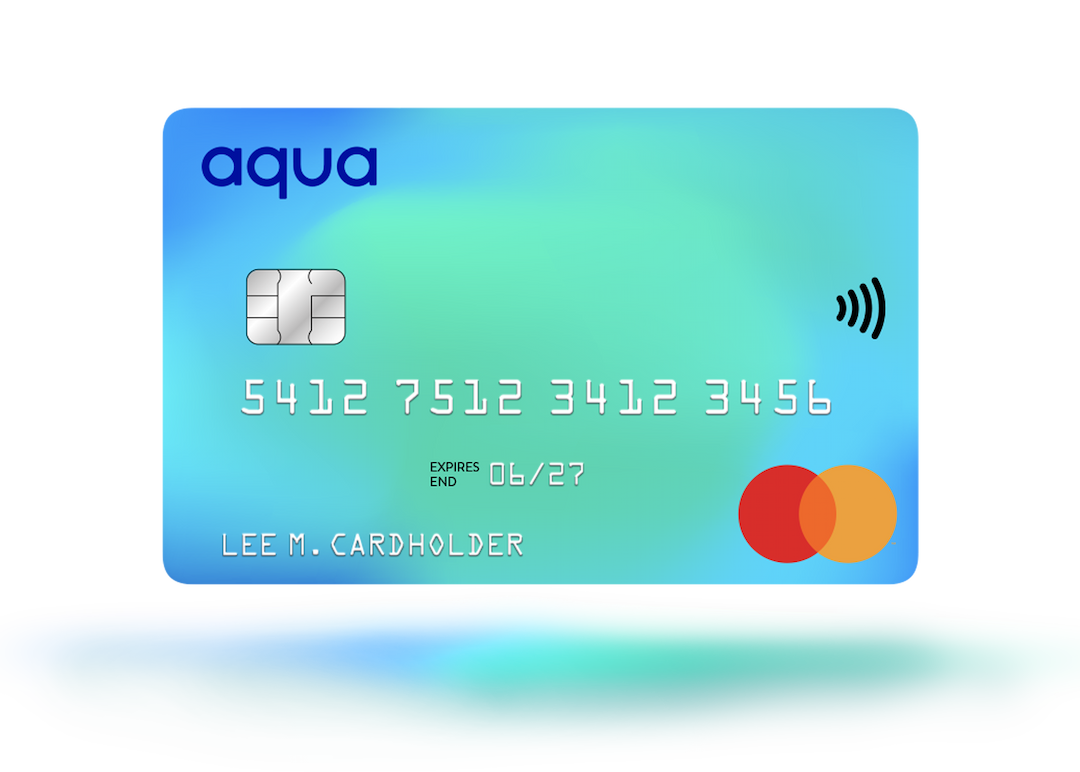In this article
What is a credit limit?
Find out how credit limits are set, how to increase or decrease yours, and whether you should.

A credit limit is the maximum amount you can spend on a credit card. Your card provider will set your credit card limit when you take out a credit card, but it can change depending on how you use it.
Sticking to your credit limit is important for building better credit. In this guide, we’ll explain how credit card limits are set and what you what you can do to help potentially increase your credit card limit.
How is your credit limit calculated?
Your credit card provider will use the information you’ve provided on your application along with your credit report to set your credit limit when you sign up for your card. The main factors they’ll look at are:
- Income – how much you earn and how much is left after your monthly expenses.
- Debts – any current credit card or other debts, such as loans and mortgages.
- Available credit – the limit on any other credit cards you have.
- Credit history – how you’ve used credit in the past, particularly whether you’ve missed payments.
Before you make an application, it’s worth checking your credit report for any red or amber flags that may concern a lender. If there’s anything that’s incorrect or misleading, you can request a Notice of Correction which might be considered when assessing your creditworthiness.
Prior to your application, most providers will give the range of potential credit limits they offer on a specific product. However, you’ll only know your individual set limit once you’ve submitted a full application and have been accepted.
If you’re not happy with the credit limit offered, you can choose to reject the card agreement, but bear in mind that the application will still show up on your credit report.
Even if you are offered a lower-than-expected credit limit, it could increase later down the line provided you manage your account well. Above all else, a lender needs assurance that you’re sensible with finances and likely to pay back what you borrow on time.
What is the average credit limit in the UK?
The average credit limit in the UK typically sits between £3,000 to £4,000, but the actual limit you’ll be offered depends on your credit history and how responsible you are with credit.
For example, those who are new to credit without a credit history are typically viewed as a higher risk to lenders and will usually be offered a lower-than-average credit limit of around £1,200.
Similarly, applicants with a low income or a less-than-perfect credit history could be offered well below the average, with credit limits starting at around £200. It all depends on your financial situation.
If you have a proven track record of being responsible with credit, with a regular income and little existing debt, you could be offered a credit limit that exceeds £3,000.
Until you apply for credit, you won’t know for sure what credit limit you’ll be offered before your lender has checked your application, credit report, and their own records (if you’re already a customer).
Can your credit limit impact your credit score?
Credit limits can impact a credit score depending on your credit utilisation ratio (the amount of credit you’re using divided by the total amount of credit you have available).
For example, if you have a credit card with a total available credit of £3,000 but you have a balance of £1,500, your overall utilisation rate is 50%.
Although there’s no specific point when your utilisation rate goes from good to bad, it’s recommended to keep your rate under 30% of your overall limit. A rate any higher could affect around 20% to 30% of your credit score, depending on the scoring model.
In general terms, maintaining a lower credit utilisation rate shows lenders you’re responsible with credit which will protect your credit score and could increase your credit limit. For more information about credit scores and credit limits, visit our credit card FAQs.
What happens when you go over your credit card limit?
Spending over your credit limit could have negative financial consequences, both now and in the future. For that reason, you should do all you can to avoid going over your credit card limit.
As well as impacting your credit score, going over your credit limit can also mean:
- Your card company may charge you a fee for going over your limit.
- Your credit report may be marked, which could make it harder to get credit in the future.
- Your card provider may increase your APR.
- You may lose any promotional interest rates, e.g. a 0% offer on balance transfers
To protect and maintain your credit score, you could follow a budget to manage your spending responsibly. Or if you need to put stronger measures in place, you could disallow an overdraft when applying for a card.
If you have an Aqua card, we’ll send you a message if you’re getting close to your credit limit. It’s important to get in touch with your provider as soon as you realise you’ve gone over your limit and try to pay off the excess balance as soon as possible.
How much of your credit limit should you use?
To build and maintain a healthy credit score, it’s wise to utilise no more than 30% of your overall credit limit. By limiting what you borrow, lenders can see you’re not heavily dependent on credit and may increase your limit later down the line.
Calculations for credit limits with 30% credit utilisation;
- Credit Limit £200 = £60 credit utilisation
- Credit Limit £1,000 = £300 credit utilisation
- Credit Limit £3,000 = £900 credit utilisation
- Credit Limit £5,000 = £1,500 credit utilisation
- Credit Limit £10,000 = £3,000 credit utilisation
To keep spending well within your credit limit, you could stick to a budget, set up payment alerts with your lender, or pay off balances as early as possible, multiple times a month. Whatever works best for you.
Above all else, it’s important to only borrow what you can afford to pay back each month. Failing to make credit card payments on time could lead to more interest on what you borrow, as well as late payment fees. Both of which make it tougher to get out of debt.
Credit card limit increases
Your credit card provider may increase your credit limit from time to time, if you make your payments on time and stick to your existing limit.
You can also ask your provider to increase your credit limit. It’s worth thinking about why you want to increase your limit, how you’ll use any increased limit, and whether you’ll be able to make repayments.
For example, if you need to pay for essential repairs to your car but have worked out a repayment plan, then it might be sensible to increase your credit limit. However, if you’re planning a holiday and just want a bit more spending money, then increasing your limit might not be such a good idea. Remember: a higher credit card balance means more interest .
If you do want to increase your credit card limit, there are a few things you should be doing:
- Use your card regularly – and pay it off. Using your card sensibly shows your card provider that you’re responsible with credit.
- Don’t go over your limit – if you can, try not to use the whole of your existing credit limit. It helps to show credit providers that you’re in control of your spending.
- Be patient – wait until you’ve had the card a few months. You’re more likely to get an increase if you’ve had your card a little while because your card provider has more time to see how you use your existing credit.
- Don't keep asking – making lots of requests to increase your limit can affect your credit score because your card provider will run credit checks when you make a request.
- Never miss a payment – it’s so important that it’s worth saying again. Even a payment that’s one day late could impact your chances of getting more credit in future.
Depending on your financial goals and personal circumstances, you might decide it’s right to decrease your credit limit. Whatever works best for you.
How often do Aqua increase credit limits?
There’s no set amount of time for us to consider increasing your credit limit. We continuously monitor your account to see how you’re getting on and may increase your limit, so long as you’re making your monthly payments and sticking to your current credit limit.
Does a higher credit limit help?
Not necessarily. If you’re regularly using all of your credit limit – no matter what it is – it’s a sign that you may not be managing your credit well.
On the other side, having a higher credit limit can help to show that you can be trusted with credit, but the bigger impact can be on what’s known as your credit utilisation ratio.
As far as your credit utilisation ratio goes, the less of your credit you’re using, the better, because it shows lenders that you’re managing your money and that you’re not stretching your finances.
Can I decrease my credit card limit?
Yes – you can ask to reduce it at any time, for example, if you find you’re not spending anywhere near your credit limit. If you’re happy with your existing limit or worried that a higher limit might tempt you to spend more, you can also reject any increase your card provider offers.
Alternatively, if you don’t want to increase your limit at all, you can ask your card company to opt you out of any increases. With Aqua, you can do this using your Online Account Manager or using our automated customer service phone line.
There’s no set amount of time for us to consider increasing your credit limit. We continuously monitor your account to see how you’re getting on and may increase your limit, so long as you’re making your monthly payments and sticking to your current credit limit.
Failure to make payments on time or to stay within your credit limit means that you will pay additional charges and may make obtaining credit in the future more expensive and difficult.
Contributors

Hayley Bevan
Hayley is an editor at Aqua.

Victoria Smith
Victoria is an editor at Aqua.
You might also like
Slide 1 of 3
Types of credit
Find out about some of the most common forms of credit and work out which is right for you.
Victoria Smith

Understanding types of credit cards
Find out more about the common types of credit cards and which is right for you.
Vanessa Stewart

What is APR on credit cards? APR Explained
What is APR and why does it matter? Discover what APR means on credit cards, how it’s calculated, and what to consi...
Alex Cook
The smart way to build better credit
Aqua is the credit card that gives you the power to improve your credit score
